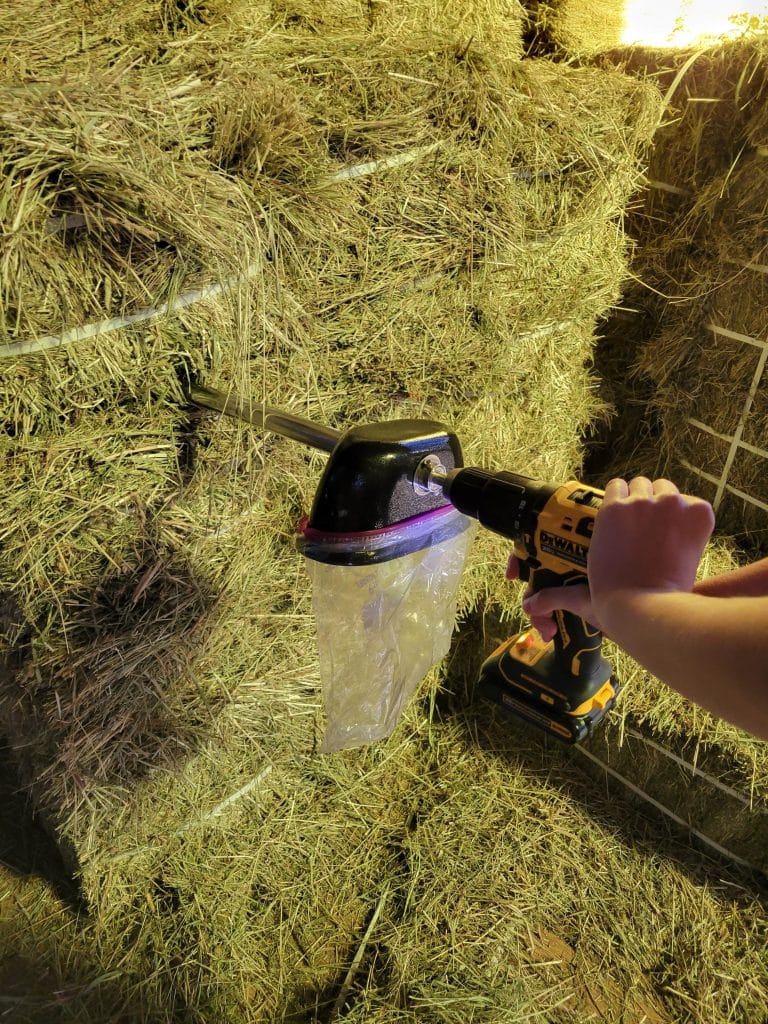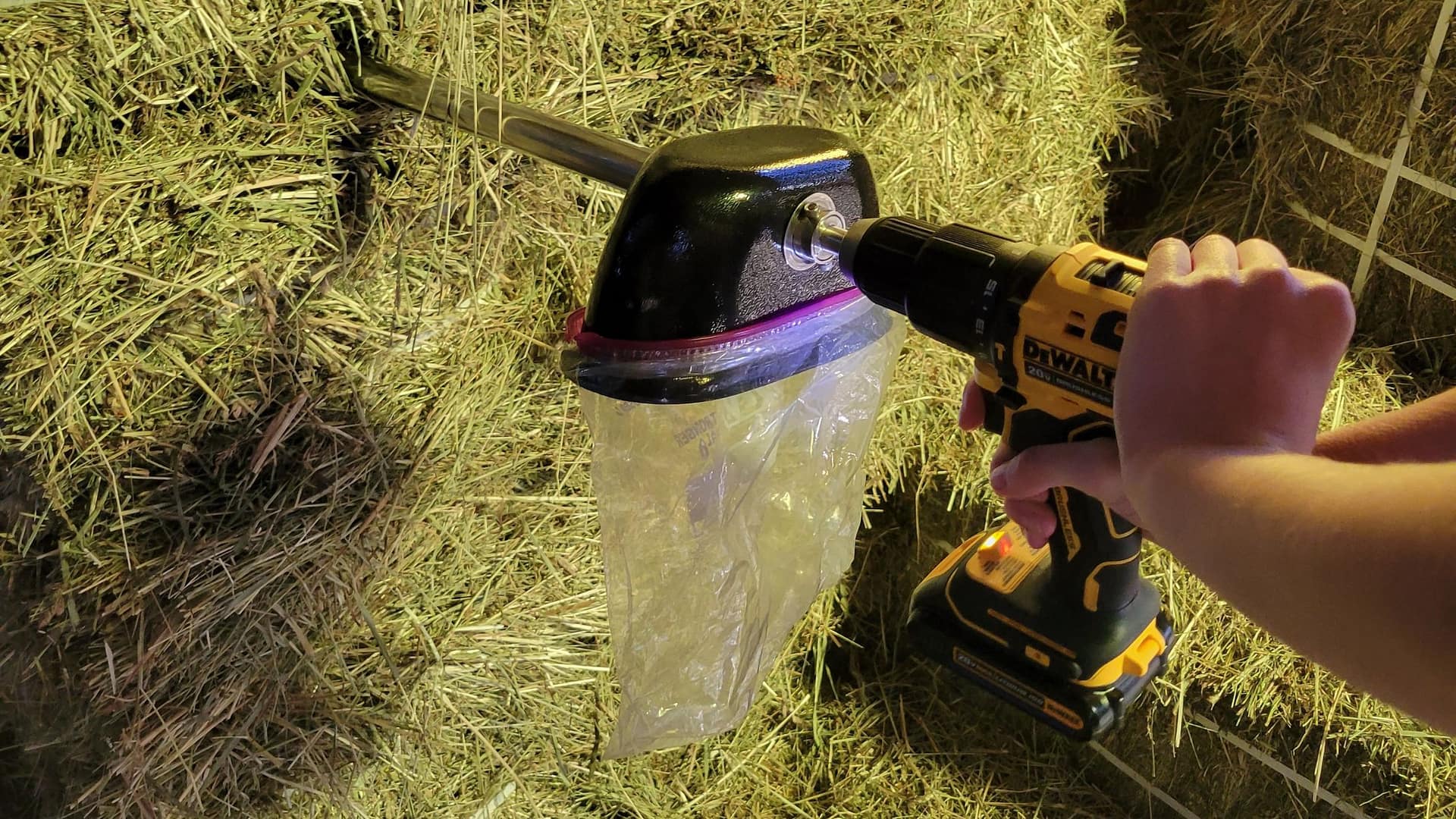When seeking hay for the season as a horse owner—simply requesting “good quality hay” is not adequate. Most horse owners would agree that hay needs to be free of mould, foreign objects, and poisonous plants. But how can we truly determine what hay is ideal for our horses? The short answer is that it depends on your horse!
The concept of “good quality hay” is challenging because hay that may be great for one horse may not be for another horse. For example, if you have a racehorse, the forage they would thrive on is not the same forage an easy keeper companion horse would. Therefore, when beginning the search for hay there are a few key steps you can follow to determine if the forage matches your needs.
1. Visual Assessment of the Hay
Looking at the qualitative properties of the hay is an important first step. The key things to look for in the visual assessment are:
- weeds
- poisonous plants
- foreign objects
- maturity of the plants
- plant species
- presence of mould
- the leaf-to-stem ratio
Additionally, taking notice of the dust level as well as the colour of the forage is important. For example, is the forage sun bleached, is it primarily green, or does it have a combination of green with brown stalk? During the visual inspection the bale (or ideally multiple bales) should be opened so an accurate assessment can be made.

2. Have a Hay Sample Taken and Sent to the Lab for Analysis
A hay analysis is important because it is the only way to know the nutrient profile of the forage. Core samples should be taken from a minimum of 7-10 bales in order to get a good representation of the harvest. Once the lab analysis is received you can truly determine if the hay is a good match for your horse.
The image to the right shows a hay coring tool being used to take a sample from a bale.
3. Critically Review the Hay Analysis Results
The key areas to look for to determine if the hay is a good match for your horse will be the protein, energy, and sugar. Protein levels will vary in forage depending on a variety of factors, but mostly will vary based on plant species. For example, the general range for grass hay is 8-14% crude protein whereas the range for legume forages tend to go up to 20%. A pregnant mare will have a higher protein requirement than a horse at maintenance. Therefore, “good quality hay” will have different parameters for these two horses. The owner of the pregnant mare will consider high protein hay “good quality,” whereas the owner of the horse at maintenance would want a hay that is only about 10% protein.
There is a similar situation when it comes to digestible energy content. The energy content of the forage is closely tied to the fat content. When managing an easy keeper, a “good quality hay” would be one with low energy and increased crude fibre. Since horses should have continual access to forage—giving an easy keeper horse an energy rich forage would be detrimental to their body condition. When this is compared to a racehorse—their hay should be as energy dense as possible due to it being challenging to maintain a healthy forage intake while still meeting their energy requirements.

A final area that is important to consider is the sugar and starch content. This is normally referred to as non-structural carbohydrates (NSCs). This is an important parameter for owners of horses that suffer from metabolic disorders. A “good quality hay” for a metabolic horse would not exceed 10% NSC. This is extremely important for their health to avoid laminitis.
In conclusion, hay can be “good quality” for some horses but may not be suitable for others. Therefore, simply referring to forage as “good quality” is not informative. Like humans, our daily requirements vary depending on age, gender, and activity level. While top quality cuisine may be quite appealing it is generally not healthy to eat every day. Having an equine nutritionist analyze hay quality to determine if it is optimal for your horse is valuable. Remember, the best quality hay is the one that closely matches your horse’s nutrient requirements.
References
Gibbs, P. G. (2005). Selection and use of hay and processed roughage in horse feeding. Texas FARMER Collection.
Undersander, D., Morrison, J., Phillips, E., Leep, R., Peterson, P., & Sheaffer, C. (2002). Buying horse hay. Wisconsin, USA: University of Wisconsin Extension Publication.

